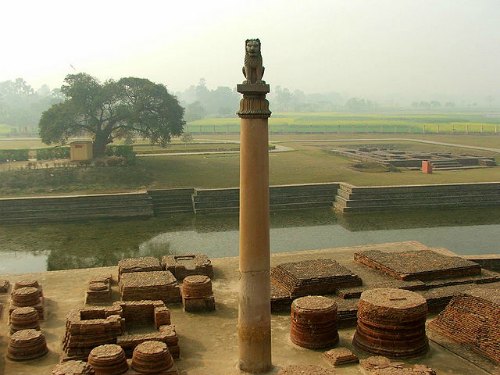Mauryan Empire, the largest realm of the Indian Subcontinent boasts certain unique features which are not only worth appreciating, but also replicating.

From its administration to its system and foreign policy, everything seemed to be impeccable of the Mauryan Empire. No wonder, even the renowned Macedonian Ambassador Megasthenes who visited during the times of Chandragupta Maurya (Founder of the Mauryan Empire) articulates how Pataliputra, the imperial capital of Magadh was the greatest city in the world.
Here we share some of the lesser known facts about the Mauryan Cities:
The Mauryan Cities Had Municipal Laws
The Magadh Kingdom was divided into four provinces – Taxila in the north, Ujjain in the West, Suvarnagiri in the South and Tosali in the East. Each of the provinces was governed by the royal princes i.e. the Kumars as the provincial governor. For instance, Prince Sushim was the governor of Taxila, and Ashoka (later Chakravartin Ashoka Samrat) of Avanti (capital Ujjayani). The provincial governors along with the council ministers and Mahamatyas made sure that the civic laws were followed by the subjects of the empire.
According to the Arthashatra, there were huge numbers of civic laws in the Mauryan Empire including Traffic Laws. Yes, while, the Modern India is full of commotion and chaos when it comes to traffic, the ancient Mauryan Kingdom had a well-established traffic rules.
Reckless Driving Was a Punishable Offence
Back in the Mauryan era, reckless driving was a punishable offence and so nobody had the right to drive their bullock carts irresponsibly. The person found guilty was punished except in few cases where the bullock would have panicked and caused the problem. Also, the driver was excused if the nose-string of the bullock broke accidentally. Besides, there was a strict law stating bullock carts shouldn’t be moved without the driver.
There Was Proper Waste Disposal System
While the modern India might have poor waste disposal management even in the big cities, the ancient Mauryan Empire made sure that the waste was disposed properly. Yes, back in the Mauryan Empire, the administration took extra care to keep the environment clean. They took precaution to see that the environment was not harmed in any way. Kautaliya’s Arthashatra gives a detailed briefing on the same. In addition, specific rules were laid down to check the maintenance of public spaces including parks and buildings.
There Were Explicit Rules against Defecating and Urinating in Public Places
One couldn’t simply go and urinate at any random place in the Mauryan Empire. There were strict rules with respect to defecating and urinating in public places. What’s more, Kautaliya’s Arthashastra talks about the fines for defecating and urinating in the area close to a temple, royal palace or a water reservoir. If only modern India could adopt these rules laid by the very ancient India that ruled the Iron Age!
Lastly,
Snooping into Neighbor’s Affair Could Bring Trouble to the Mauryans
While, nosy neighbors are a huge problem to almost everybody around the world today, Arthashastra did not approve of such neighbours at all. Yes, the law of the Mauryan Empire restricted the neighbors from interfering in the affairs of each other.
No wonder, these municipal laws stated by the Arthashatra clearly states how sophisticated the urban life of the Mauryan Empire was. Don’t you think these ancient practices are very much needed in today’s India as well?

